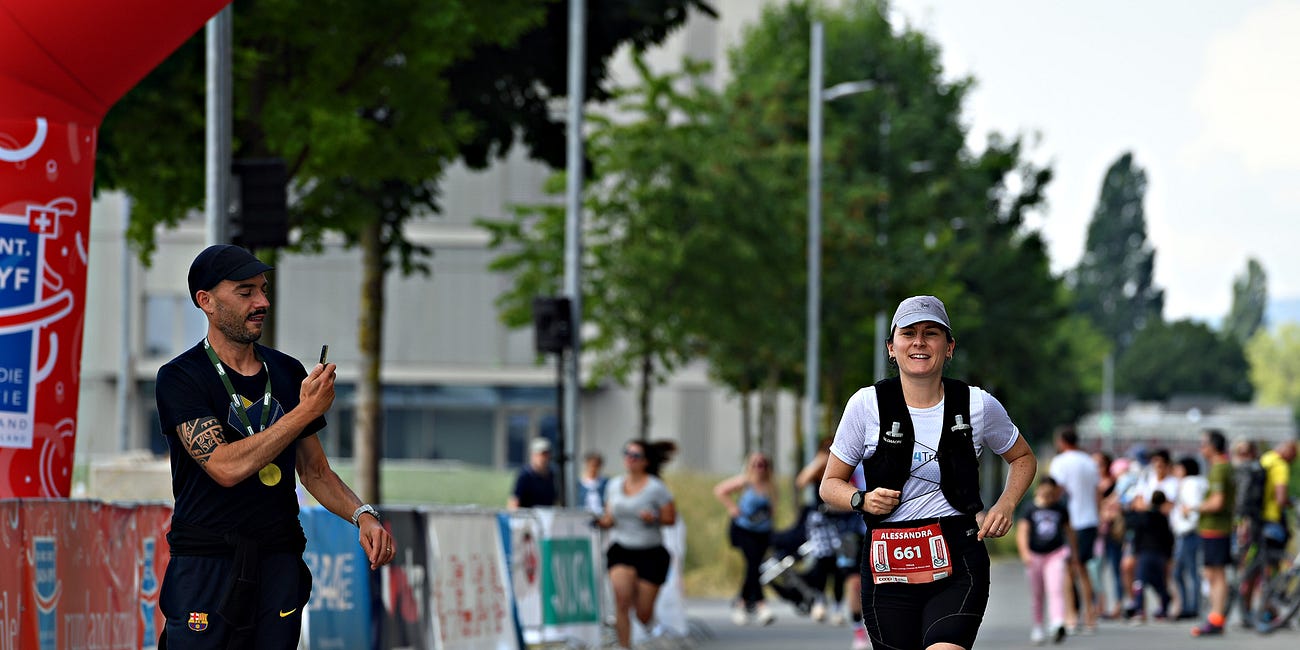Monthly Newsletter: December 2023
heart rate variability, wearables, entrepreneurship, training talk and some ramblings
hi there 👋
I hope all is well and you are enjoying some time off during the holidays.
Here is my last newsletter of the year. I hope you’ll find it useful and would like to thank you for your support.
Please feel free to comment below or in the articles should you have any questions, and I will follow up.
Take care!
Heart rate variability (HRV) and wearables 🫀⌚️
Resting heart rate and wearables: What’s your resting heart rate? A simple question with a not-so-simple answer. When tracking data, a few things matter more than others. For example, the accuracy of the sensor as well as consistency and timing of the protocol, allowing for a proper physiological interpretation of the data. First, we need to use an accurate sensor to measure resting heart rate. Secondly, we need a consistent protocol. Why is this important? When we measure resting heart rate or HRV, what we want to do is to capture relative changes over time in relation to changes in e.g. physiological stress or cardiorespiratory fitness. If our protocol is inconsistent, even if the sensor is accurate, the data will be meaningless. Learn more about how wearables report your resting heart rate, here.
Podcasts, Talks, and articles 🎙️
Somewhat analytics podcast: I had a chat with Parker and Kaustav at Somewhat Analytics, discussing being a data-driven endurance athlete. We discussed how I used data over the years, and how the tools I have built - like HRV4Training - helped in the process. Link here.
HRV guide for Marathon Handbook, part 2: How Do We Measure Heart Rate Variability?: In Part I of this series we saw how HRV can serve as an indicator of the stress response if measured under certain conditions. In this blog, we clarify what those conditions are, and get more practical, covering available technologies and protocols for accurate HRV measurement. Link here.
HRV guide for Marathon Handbook, part 3: Here’s How To Interpret Heart Rate Variability Data (And How Not To): Let’s finally talk about the data. How do we interpret it? And how do we use it in the context of training? Keep reading to find out.
Publications 📄
SLEEP Paper accepted for publication: de Zambotti; Goldstein ; Cook; Menghini; Altini; Cheng; Robillard. “Practical Guidelines for Using Wearable Technology in Sleep and Circadian Research: A Position Statement from the Sleep Research Society”. I will talk more about this article later, but it is in part covered in this blog where I discussed my talk for the Royal Sleep Society.
Building 🛠️
HRV4Training Pro. You can find the user guide here. I hope you’ll like the new platform, and would like to thank you for your support. Below is the past year of my data, with a few annotations, as shown in HRV4Training Pro (use code SCIENCE for 25% off until Sunday). I discuss the data in more detail, here.
Aerobic efficiency feature update in HRV4Training Pro. We added a new control in the aerobic efficiency analysis in HRV4Training Pro, to let you filter out workouts with zero elevation gain reported, which is typical of treadmill workouts. In addition, the software will now store your settings for cycling and running separately. Learn more, here.
Migration to Oura’s new APIs. I’m aware there were a few hiccups with this, but hopefully, they are resolved with the latest versions of the apps just released in the last few days. In case of drama, keep in mind that Manual Input is your friend (see how it works, here).
Training talk 🏃🏻♂️🚴
The year is ending and it’s time to look back at our training logs. How did it go?
Training log. As the name says, this is simply my training diary for the year.
Training year in review. It has been quite a fun training year, good racing, performance beyond (my) expectations, but also, a little too many injuries and physical issues. In this blog: Year results. Reflecting on this journey. Main learnings. Year overview and totals. Injuries. Resting physiology. Next steps.
Training year in review: 2023
It has been quite a fun training year, good racing, performance beyond (my) expectations, but also, a little too many injuries and physical issues. In this blog: Year results. Reflecting on this journey. Main learnings. Year overview and totals. Injuries injuries injuries.
Thank you for reading and see you in the new year!
Archive:
Marco holds a PhD cum laude in applied machine learning, a M.Sc. cum laude in computer science engineering, and a M.Sc. cum laude in human movement sciences and high-performance coaching.
He has published more than 50 papers and patents at the intersection between physiology, health, technology, and human performance.
He is co-founder of HRV4Training, advisor at Oura, guest lecturer at VU Amsterdam, and editor for IEEE Pervasive Computing Magazine. He loves running.
Social:









As always I learned a lot from you this year, thank you so much, Marco! Have a happy and healthy new year!
Thanks for your work! All the best for the next year!